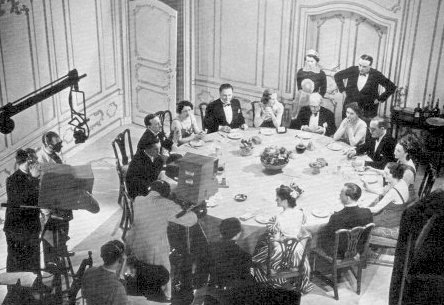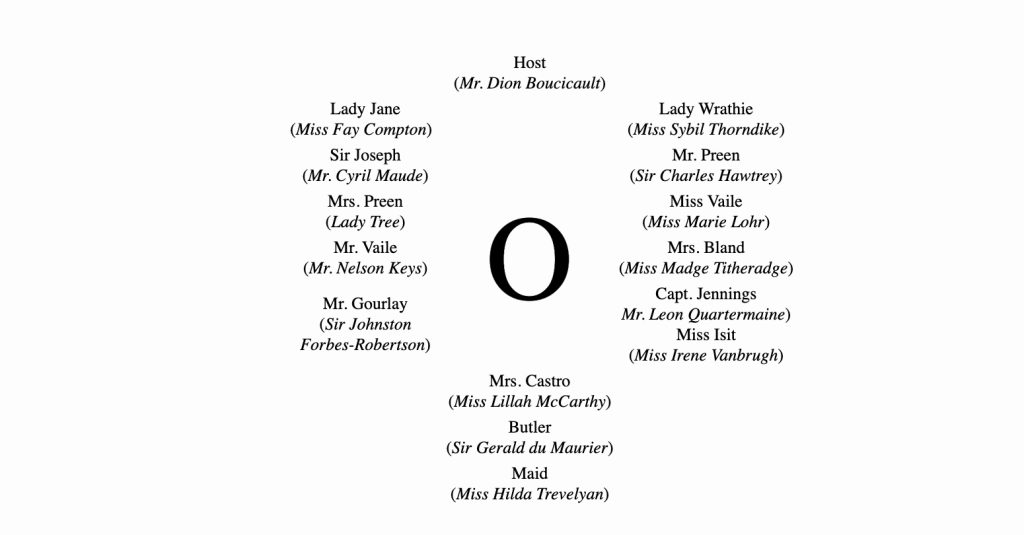OTD in early British television: 25 April 1939

John Wyver writes: The first half-hour of the afternoon transmission on Tuesday 25 April 1939 was graced with the second performance of a production J.M. Barrie‘s one act, and according to the author ‘unfinished’, Shall We Join the Ladies? The cast of 16 included Margaretta Scott, Basil Radford, Richard Goolden and Frank Allenby.
As the Radio Times billing noted:
Technically, Shall We Join the Ladies? is extremely difficult to produce for television, the action being confined to diners seated round a circular table. It will be interesting to see how producer George More O’Ferrall copes with the problem of showing the diners’ faces and not their backs.
It is not at all clear from the above publicity shot that the ever-inventive More O’Ferrall found a satisfactory way of tackling the problem.
Grace Wyndham Goldie’s Listener review suggests that O’Ferrall was only partly successful. She compared the presentation of Barrie’s drama with that of Bernard Shaw’s play Geneva, which had also been recently done at AP:
Sam Smith is at dinner with his twelve guests. He knows that one of them murderd his brother. He means, by playing on their nerves, to make the murderer give himself away. Once more [as in Geneva] we have the circle and once more the drama consists of the play of character within it.
And all that the television camera could do in each case, by the use of infinite ingenuity, was to focus our attention on each speaker in turn. Now this was, as it turned out, pretty well. For the words and situations in both Geneva and Shall We Join the Ladies? are good enough to make excellent enrtainment even like this.
Nevertheless, in each play the author meant us to see something which we could not see in television, the simultaneous reaction of a quantity of people to a speech or an event. Without this the success of these plays on the television screen was, like elephants dancing, astonishing, forced, partial and unnatural.
The circle for this play had first been formed on 27 May 1921 when the play was premiered at – and indeed had been written for – the opening of the Theatre of the Royal Academy of Dramatic Art in London, England, on May 27, 1921. Here’s the distinguished cast that assembled then, led by actor and playwright Dion Boucicault, who had also worked with Barrie on the script :

The April 1939 television broadcasts took place at a moment when there was considerable pressure on the Television service, in part because of budgetary concerns, to ‘share’ broadcasts with radio. As an experiment, the audio of this second transmission was carried in the afternoon schedule of the Regional programme. The focussed setting must have been thought to be suited to radio, but according to a later internal report, ‘it could not be called a success on sound’.
One other note. The Programme-as-Broadcast record of this second performance credits, quite exceptionally, Peter Henschel as ‘prompter’. With the play’s producer cocooned high above the studio floor, such a role would of course have been essential for live dramas. I think I have always assumed that the floor manager took this task, but clearly on at least some occasions a dedicated person on the book was required.
Leave a Reply